The Appraisal
To Art History, Matisse Is a Master. To the Market, It’s a More Complicated Story
The artist's most famous works are in museums, and his collectors can be fickle. Recently, his late work has been reassessed.
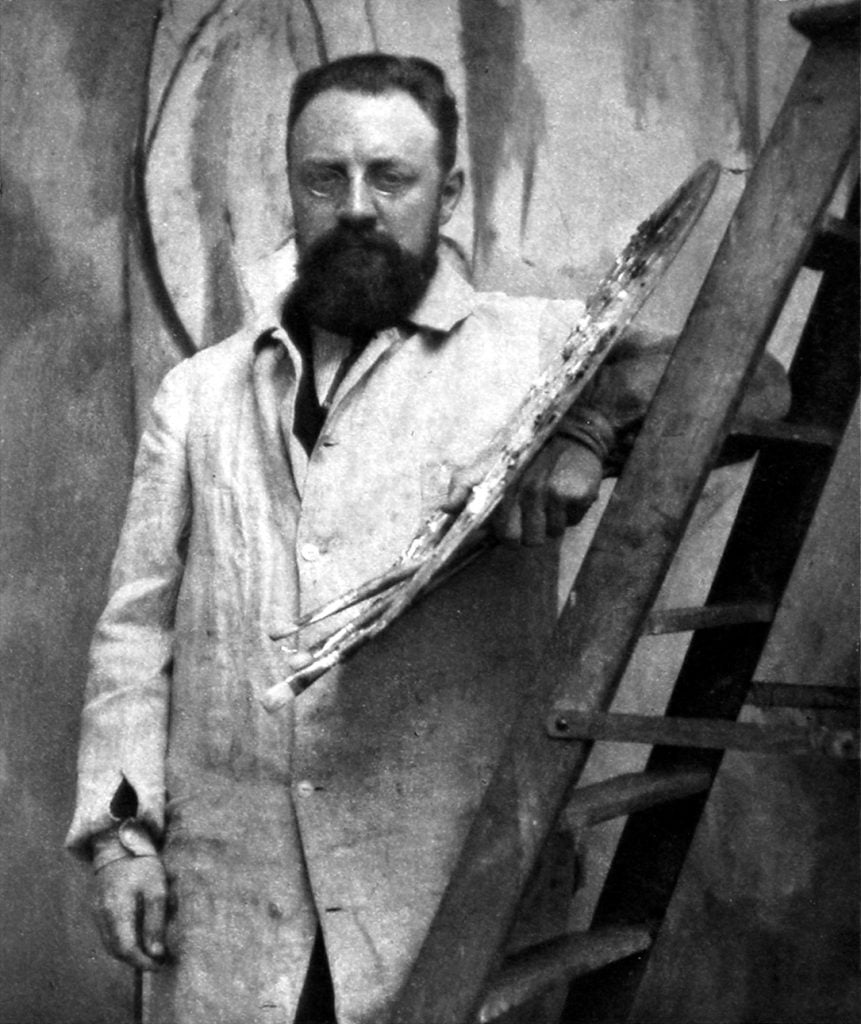
The artist's most famous works are in museums, and his collectors can be fickle. Recently, his late work has been reassessed.

Eileen Kinsella

Fans of Henri Matisse are poised to have a very good summer, with several major shows at prestigious venues around the world. “Matisse and Renoir: New Encounters” is on view at the Barnes Foundation in Philadelphia, “Matisse: The Red Studio” is at the Foundation Louis Vuitton in Paris after an acclaimed run at the Museum of Modern Art in New York, and “Miró Matisse: Beyond Images” is at the Matisse Museum in Nice, France.
But while the Fauvist master of color is an undisputed master of 20th-century art history, his market has a surprising number of quirks. There are staggering price gaps at the top-end of his auction results (most of his major paintings are ensconced in museum collections), and his later, bolder works are coming into vogue, after previously being sidelined. Meanwhile, there is a thriving trade in his works on paper, particularly for his late collages and cut-out paper works.
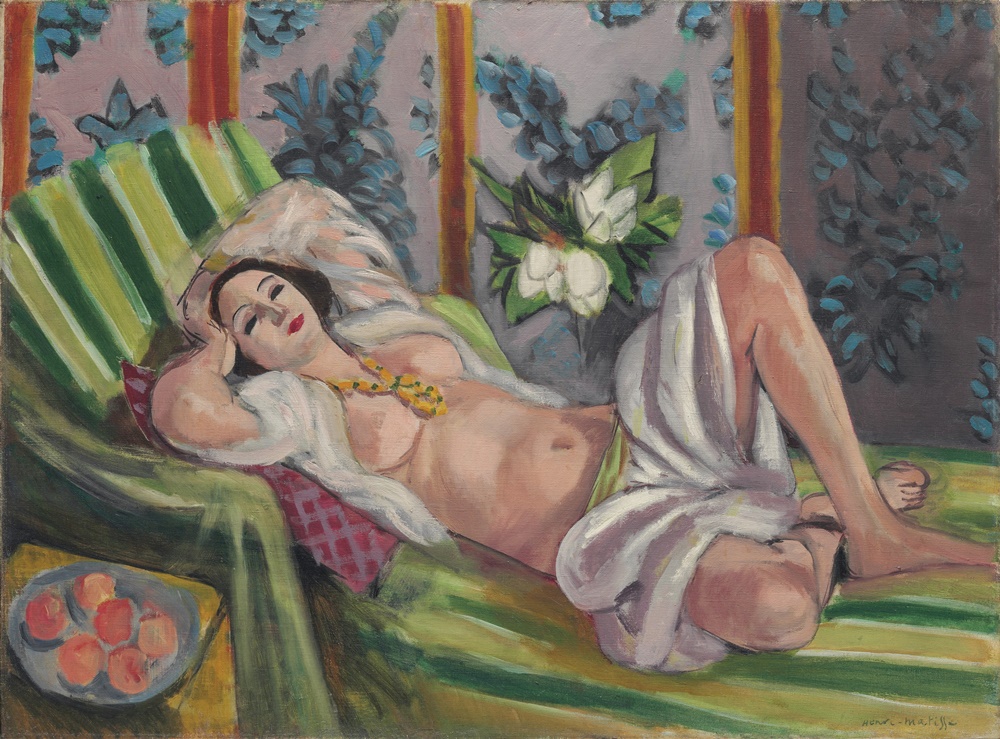
Henri Matisse, Osalisque coucheé aux magnolias (1923). Courtesy Christie’s Images Ltd.
The current auction record for a Matisse is the $80.7 million that was paid for the painting Odalisque couchée aux magnolias (1923) in 2018 during the blockbuster David and Peggy Rockefeller collection sale at Christie’s in New York. The second highest price is $48.8 million, a difference of more than $30 million, paid in 2010 at the same house for a rare 1923 bronze sculpture, Nu de dos, 4 état (Back IV), cast in 1978.
That bronze edged out the artist’s previous record, which was set in 2009 at Christie’s in Paris as part of the landmark Yves Saint Laurent sale, when a floral still life, Les Coucous, Tapis Bleu et Rose (1911), went for $45.9 million (€35.9 million) against a $23 million estimate.
“A growing scarcity of great works by the artist is the reason they create so much attraction” when they appear, Adrien Meyer, co-chairman of Impressionist and Modern art at Christie’s, said in an interview. “These opportunities get rarer as the years go by,” he added.
There has long been demand for works by “Matisse in the 19-teens, when he is really pushing the boundaries of color . . . the challenging, aggressive paintings that are probably his most avant-garde,” said Julian Dawes, Sotheby’s head of Impressionist and Modern art. “They’re very, very hard to find outside of museums.”
David Norman, an auction veteran and former head of the Impressionist and Modern department at Sotheby’s, who is now a private dealer, said that, compared with his lifelong rival, Pablo Picasso, Matisse was far less prolific. By some estimates, Matisse created 1,007 paintings compared with Picasso’s 13,500 paintings. As a result, there have always been “far less A+, A, or A-minus paintings, where Matisse is concerned,” Norman said. The “Rockefeller was one of those pictures that everyone knew about and understood that it wasn’t going to be a museum bequest.”
A Quick Look at the Matisse Market
Auction record: $80.7 million for Odalisque Couchée aux Magnolias (1923), which sold at Christie’s May 2018 auction of the collection of David and Peggy Rockefeller.
Performance in 2023
Lots sold: 360
Bought in: 100
Sell-through rate: 78.3 percent
Total sales: $50.9 million
Top painting price: $9 million, for Mademoiselle Matisse en Manteau Écossais (1918) at Christie’s New York on May 11, 2023
Lowest painting price: $225,991, for La Route (1918) at Christie’s Hong Kong November 2023.
Lowest overall price: $269, for a lithograph.

Source: Artnet Price Database
Expert View: While earlier generations of collectors focused on Matisse’s 1920s Nice paintings, with their lush female figures and interiors of famous hotels, supply issues have led contemporary buyers to his 1940s works, which are marked by “much more vigorous, rapid brushstrokes and separated, intense colors that are more modern and expressionistic,” Norman said.
Something similar has occurred with many other canonical artists, like Picasso, whose late works have enjoyed a boost in recent years while his pivotal early works reside in museums.
Tastes have also changed, as leading collectors have become more deeply involved with contemporary art, according to Norman. “Just like late Picasso went better with Basquiat than Renoir, late Matisse also went better,” he said.
According to the Artnet Price Database, the highest price recorded for a Matisse from the 1940s is $23.9 million (£15.8 million), for Odalisque au Fauteuil Noir (1942), which was sold at Sotheby’s London in 2015.
“What I think the market is able to find and responds really well to is color, first and foremost, and figures that are really elegant and interesting,” Dawes said. “When you have a really successful, dominant figure in an interesting composition, that is well-received.”
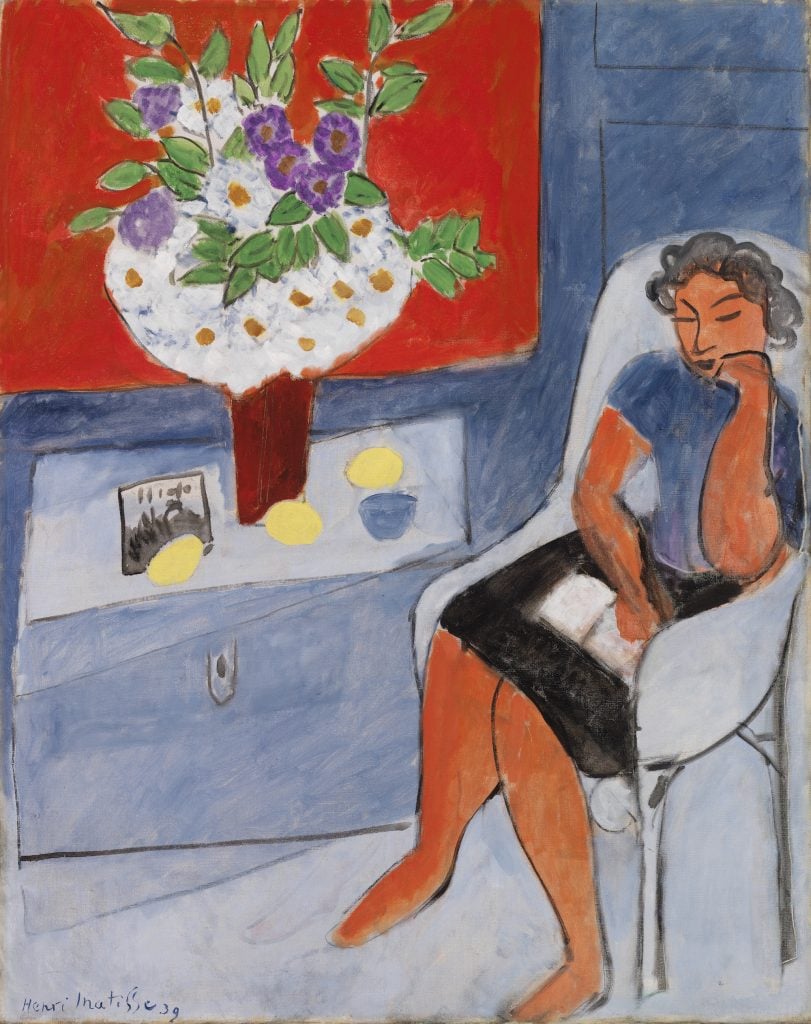
Henri Matisse, Figure with Bouquet, August 1939 The Barnes Foundation, BF980. © 2024 Succession
H. Matisse / Artists Rights Society (ARS), New York
Another quirk of the Matisse market, Norman said, is that potential buyers have been known to balk over aesthetic matters that would likely not be an issue with some other artists. “If the single line that describes the mouth is a little turned down or wobbly,” he said, “people will walk in and go, ‘What’s with the expression?’ ”
One stellar painting of a woman consistently drew criticism from viewers who said that her feet “looked like flippers or duck feet,” Norman said. “I can’t imagine people looking at a Picasso and saying, ‘Look at those feet.’ It’s not like anyone expects the painting or the anatomy to be realist, but people are just much more critical of Matisse and pick out anything they see as off.”
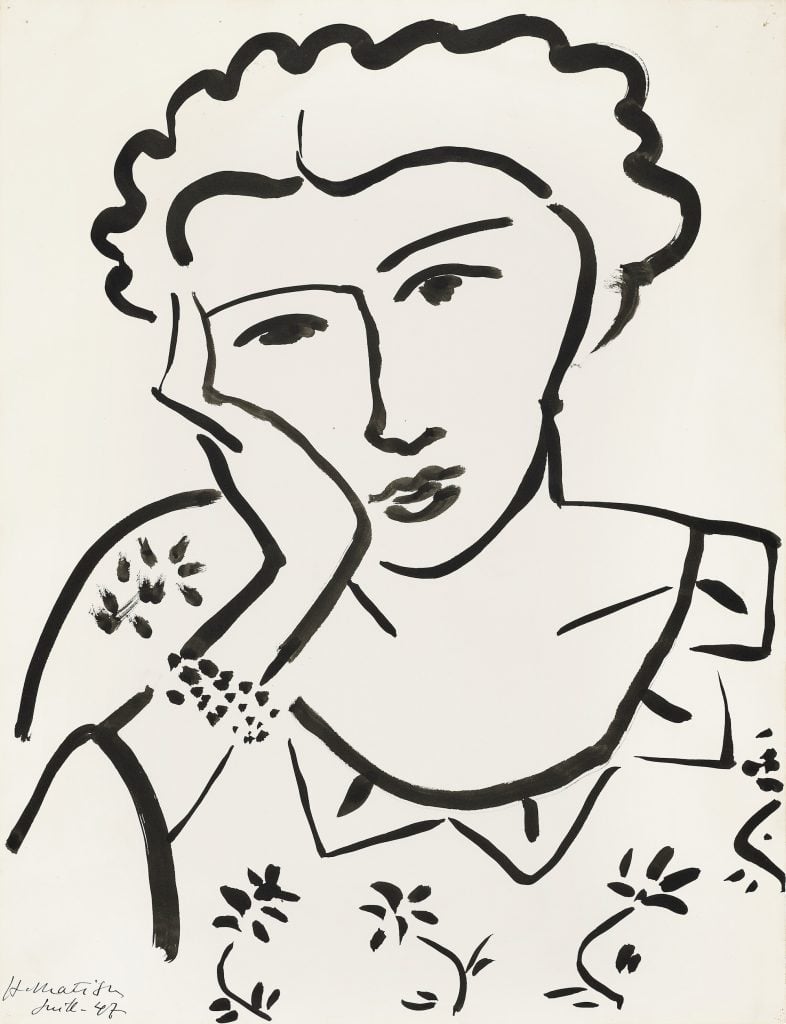
Henri Matisse, Jeune fille accoudée (1947) a brush and India ink on paper. Image courtesy Christie’s.
Meyer, of Christie’s, said that, generally speaking, the market for Matisse’s works on paper has been stable over the last 10 to 15 years, with prices ranging between $50,000 and $2 million.
However, “the exception to the rule is the collages, because they embody the creativity of the artist and the way in which he approached new techniques throughout his career,” says Meyer.
During the last years of Matisse’s life, when he was disabled and confined to his bed, he would cut pieces of painted paper with large scissors, glue them onto large sheets of paper, and then have them hung on the walls around his bed.
These collages or cut-outs have become hotly sought after by collectors. “The collages are in strong demand, perhaps more than they have ever been,” Meyer said. (Do you own a Matisse cut-out? Think carefully about your desired price, and give him a call. “We are currently on the hunt for two clients on the private-sales front,” he said.)
Prices have been strong for such paper collages for a while. As far back as 2009, at the Saint Laurent collection sale, Le Danseur—a cut-out with gouache and pencil dated 1937–38—sold for $8.7 million (€6.8 million).

Matisse’s prototype of “Jazz” at Frieze Masters. Courtesy Frieze Masters.
While Matisse’s paintings dominate his top auction results, market insiders believe that a complete set of his four “Back” sculptures could potentially reset his record if they ever came up on the block, going for well over $100 million, as the Art Newspaper noted back in 2010. The “Back” that went for $48.8 million that year is believed to have been purchased by dealer Larry Gagosian for a client.
The series has a remarkable (and poignant) backstory. As TAN reported, Tate Gallery endured serious blowback from patrons and trustees in 1957 when it shelled out just £11,000 (roughly $123,000 today) for a complete set of four “Backs” sculptures.
The Earl of Crawford, a former Tate trustee who was then heading an art-buying fund in the United Kingdom, flatly told the museum, “I don’t suppose you are proposing to ask the [fund] to help with the Matisse bronze—but, if you are, please don’t!” Thankfully, the museum found a way, securing what turned out to be one of the great bargains of the century.
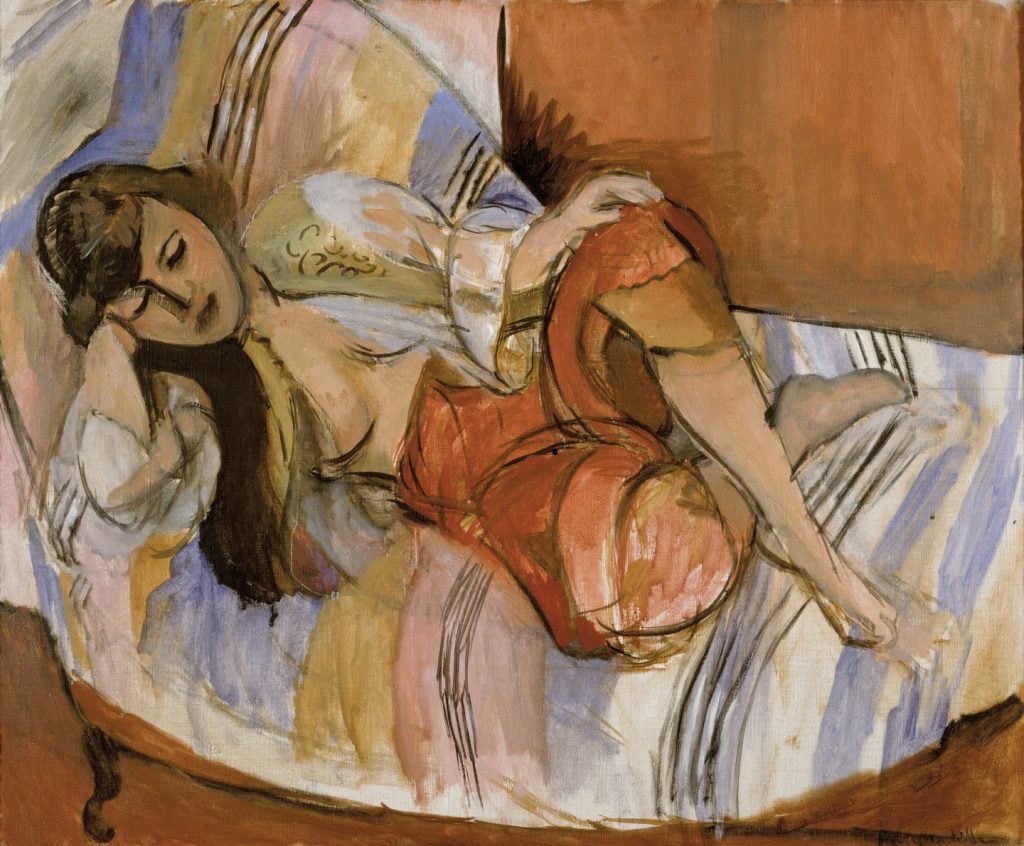
Henri Matisse. Odalisque (1920–21). Photo courtesy of Succession Henri Matisse, c/o Pictoright Amsterdam/Stedelijk Museum Amsterdam
The Appraisal: The dearth of great Matisse paintings in private hands, combined with the aforementioned fickleness of trophy hunters, means that there is an opening for collectors willing to go for below-A-grade paintings. Works on paper trade at a far lower price point, though there is a lot of material to sift through, so interested buyers need to do their homework before dropping five or six figures.
The Matisse market was relatively flat not too long ago, Dawes, of Sotheby’s, said. However, “there has been a perceptible reverse course in market momentum upwards,” he added. “In the last two years, we’ve seen some really dynamic results but again, talking about material in the $10 million range, which is great, but Matisse has the potential to be a $100 million artist.” The “Backs” could break that nine-figure barrier, as could a particularly remarkable painting from a revered private collection.
At a moment when figuration has been a dominant style in the ultra-contemporary field, it certainly makes sense that a pioneering modernist forebear would be performing well. However, as the artist’s own recent market performance shows, tastes change—sometimes very quickly. Matisse’s brilliantly bold late paintings could one day come to seem a touch overblown, or even passé, particularly if waves of younger artists pursue other passions.
Having said all that, Matisse is so firmly embedded within European art history that his signature works, particularly his elegant works on paper and his inventive cut-outs, are rightfully regarded as safe, secure bets.